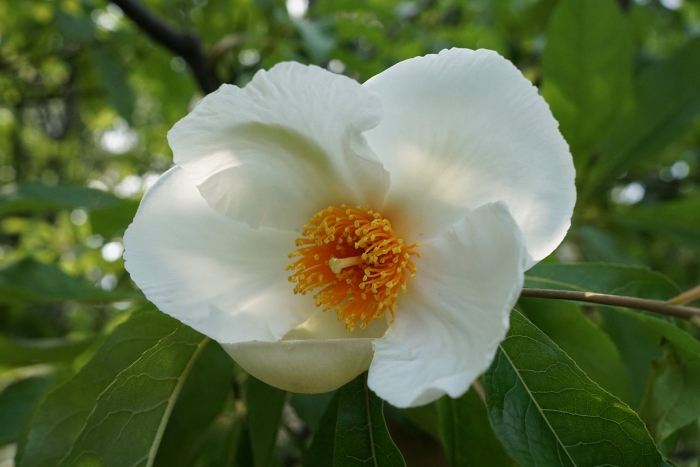Franklin Tree
(Franklinia alatamaha)
Franklin Tree (Franklinia alatamaha)
/
/

Plant Image Library
CC BY-SA 2.0
Image By:
Plant Image Library
Recorded By:
Copyright:
CC BY-SA 2.0
Copyright Notice:
Photo by: Plant Image Library | License Type: CC BY-SA 2.0 | License URL: https://creativecommons.org/licenses/by-sa/2.0/ | Uploader: Plant Image Library | Publisher: Flickr |





























Estimated Native Range
Summary
Franklinia alatamaha, commonly known as Franklin Tree, is a small deciduous tree historically native to the Altamaha River valley in Georgia, but it has been extinct in the wild since the early 19th century. It typically grows to 10 m (33 ft) tall, but more commonly reaches 4.5–7.5 m (15–25 ft) in cultivation. The Franklin Tree is celebrated for its fragrant, showy white flowers, which bloom in late summer to early fall and resemble single white Camellia blossoms, with a scent reminiscent of orange blossoms or honeysuckle. The tree has a symmetrical, somewhat pyramidal shape, with individuals often forming nearly identical crowns. It is known to sucker and can form multiple vertical trunks from the base.
Franklinia alatamaha is valued for its beautiful flowers and potential longevity, with specimens living over a century once established. It is used in gardens and landscapes for its ornamental appeal, and despite its reputation for being difficult to cultivate, it can thrive under the right conditions. It requires sandy, acidic soil and does not tolerate compacted clay, excessive moisture, or root disturbance. While it has no major pests, it is susceptible to root-rot and crown-rot caused by Phytophthora cinnamomi and struggles with drought. In cultivation, it prefers full sun to part shade, ample water, and well-drained soil. Due to its historical significance and rarity, the Franklin Tree is often a conversation piece in gardens.CC BY-SA 4.0
Franklinia alatamaha is valued for its beautiful flowers and potential longevity, with specimens living over a century once established. It is used in gardens and landscapes for its ornamental appeal, and despite its reputation for being difficult to cultivate, it can thrive under the right conditions. It requires sandy, acidic soil and does not tolerate compacted clay, excessive moisture, or root disturbance. While it has no major pests, it is susceptible to root-rot and crown-rot caused by Phytophthora cinnamomi and struggles with drought. In cultivation, it prefers full sun to part shade, ample water, and well-drained soil. Due to its historical significance and rarity, the Franklin Tree is often a conversation piece in gardens.CC BY-SA 4.0
Plant Description
- Plant Type: Shrub, Tree
- Height: 20-25 feet
- Width: 6-15 feet
- Growth Rate: Moderate
- Flower Color: White
- Flowering Season: Summer
- Leaf Retention: Deciduous
Growth Requirements
- Sun: Full Sun, Part Shade
- Water: Medium
- Drainage: Fast, Medium
Common Uses
Bee Garden, Bird Garden, Border Plant, Butterfly Garden, Fragrant, Potted Plant, Showy Flowers
Natural Habitat
Historically native to the Altamaha River valley in Georgia, but extinct in the wild since the early 19th century
Other Names
Common Names: Franklin-Tree
Scientific Names: Franklinia alatamaha , Franklinia alatama , Gordonia alatamaha , Gordonia altamaha , Gordonia pubescens , Gordonia pubescens var. subglabra , Gordonia franklinii , Franklinia americana , Gordonia frankliniae , Gordonia pubescens var. velutina
GBIF Accepted Name: Franklinia alatamaha Bartram ex Marshall